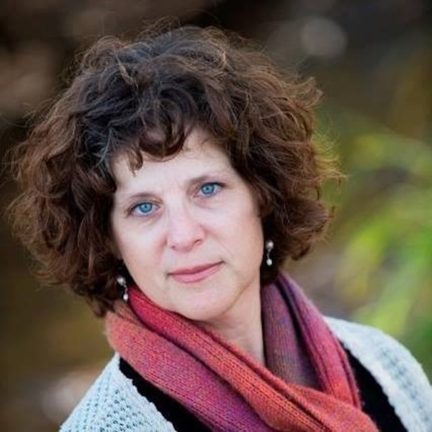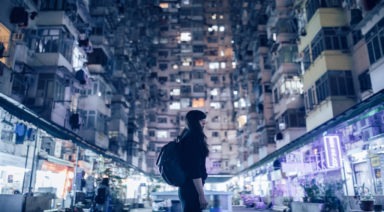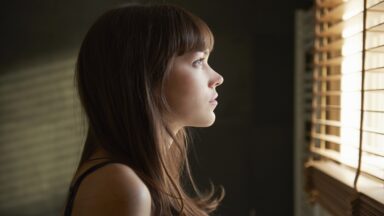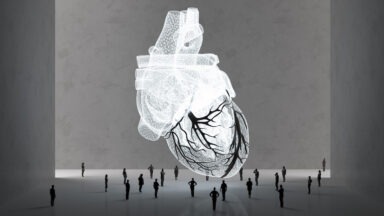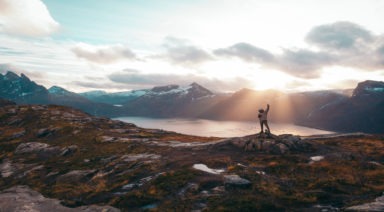Rudolf Steiner: A Soul In Love With Life

Philosopher. Educator. Architect. Esoteric. Spiritual Scientist. Rudolf Steiner was each of these and more — a man of multitudes, embracing the deeply scientific, as well as the higher realms of mystics. Considered an innovator and disrupter of traditional ideas, Steiner’s original thinking helped shape modern medicine, sustainable agriculture and economics, body-centered arts, spirituality, and holistic education. Many believe Steiner was one of the most “spiritually gifted and accomplished figures of the 20th century,” inspiring generations to achieve our highest human potential.
EARLY LIFE AND INFLUENCES
Born in 1861, Rudolf Steiner began his life in Pottschach, nestled in the lower Austrian Alps. Jonathan Stadall’s documentary, The Life of Rudolf Steiner, provides insight into Steiner’s formative years, ones in which he was free to explore nature while exposed to the power of the railway, where his father was stationmaster. This juxtaposition of nature and science shaped Steiner as he worked to find a bridge between the two.
From his earliest years, Steiner was a spiritually-attuned child. At nine years old, he was reportedly visited by the spirit of a deceased aunt, which awakened in him a spiritual yearning.
In 1879, Steiner enrolled at the Vienna Institute of Technology where he studied physics, mathematics, biology, botany, chemistry, and zoology, as well as his true interests, philosophy and literature.
Despite his parents’ wish for him to become an engineer, Steiner was drawn to the writings and ideas of 19th century philosopher Immanuel Kant, as well as Johann Gottlieb Fichte, and Friedrich Wilhelm Joseph Schelling, leaders of German Idealism, a philosophical movement centered on consciousness as the “only knowable thing.”

Steiner in 1915 — photo courtesy of the Center for Anthroposophy.
During this time, Steiner met Felix Koguzki, a licensed herbalist and clairvoyant. Despite the stark age difference, in Koguzki, Steiner found a spiritual confidante: “With [Koguzki], one could look deeply into the secrets of nature…explain each plant out of its essence…When [Koguzki] spoke about leaves or trees and…about the wonderful essence of his healing herbs, on felt how his soul was intimately connected with all that constituted the spirit of nature…” This seminal relationship would form Steiner’s theory of biodynamic agriculture, a spiritually-grounded relationship to the natural world.
Steiner and Goethe
In addition to Koguzki, the most lasting influence for Steiner was Johann Wolfgang von Goethe (1749-1832,) whose writings he encountered as an undergraduate student. Steiner was drawn to Goethe’s romanticism and the writer’s belief in humanity’s potential for spiritual development through a developed relationship with oneself and the natural world. Steiner wrote in The Story of My Life: “When I look back…I have to say to myself that I owe to [Goethe] in large measure the evolution of my spiritual experience of knowledge.”
Steiner’s quest for spiritual community led him to the growing Theosophy movement where he quickly moved up in the ranks. In 1902, he became president of the German Theosophical Society, beginning an intense period of lecturing and publishing on primarily Christian-focused themes. For Steiner, Christ represented the singular transformative consciousness for humanity. This belief eventually put him at odds with the direction the Theosophy movement was taking when one of its ranking members advocated for expanding the movement to include Jiddu Krishnamurti.
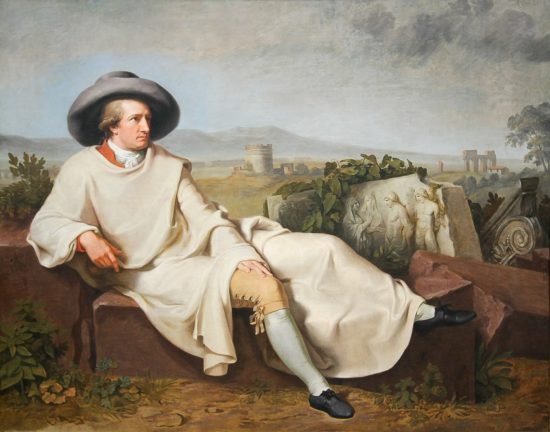
Goethe by Johann Henrich Wilhelm Tischbein, 1787
Anthroposophy: A Philosophy of Freedom
After his break with Theosophy, Steiner founded Anthroposophy, a philosophical method, and spiritual practice. Rooted in the philosophies of Aristotle, Plato, and the German Idealists, anthroposophy is also known as the “spiritual science.” The central theme is that humans can achieve a unified and highly developed consciousness through nurturing the soul and through a disciplined development of one’s imaginative, inspirational, and intuitive faculties. Anthroposophy is more than a conceptual philosophy; it represents a path of practice and research with numerous applications including biodynamic farming, anthroposophic medicine, and Steiner-influenced Waldorf education.
Steiner and the Birth of Biodynamic Agriculture
In 1924, Steiner gave a series of eight lectures that would forever influence agriculture, and which, according to the Rudolf Steiner Archives, established a way of farming that extended beyond organics to “working with the cosmos, earth, and spiritual entities,” becoming what is referred to as biodynamic agriculture. According to the Biodynamic Association, Steiner prescribes “specific ‘preparations’ for the soil, as well as other distinct methods born from his profound understanding of the material as well as spiritual worlds…Decades later, biodynamic agriculture continues to flourish with these key components at its center.”
- Treating every biodynamic garden or farm as a living organism
- Listening to the land for what wants to emerge and grow
- Joining animals and plants together to support the land’s health
- Working in rhythm with the earth and cosmos
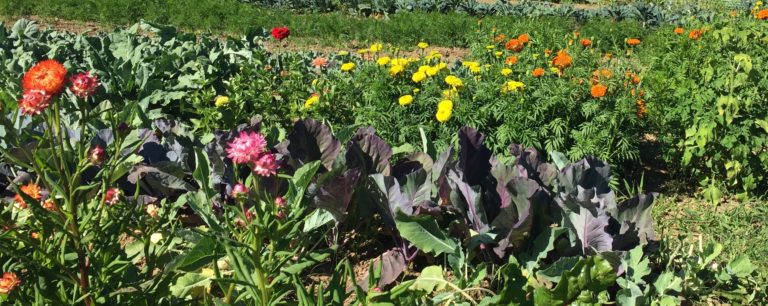
A biodynamic garden.
Anthroposophic Medicine: Integrative, Holistic, and Spiritual
A natural extension of Steiner’s biodynamic philosophy would soon impact the healing arts; In 1920, Steiner and Ita Wegman co-founded what is now known as anthroposophic medicine. Often combined with conventional medicine, this approach utilizes plants, minerals, art therapy, eurythmy (a body-based system of integrating music and movement), massage, and psychotherapy that also incorporates spiritual insight into the diagnostic, treatment, and healing process.
According to Health-Technology Assessment, which publishes research on the effectiveness, costs, and broader impact of health technologies, a recent report of 265 clinical studies showed high levels of satisfaction with this modality. Today, anthroposophic medicine is established in more than 80 countries treating those with acute and chronic ailments.
In the United States, anthroposophic medicine is offered in medical school programs, including the University of Michigan’s Integrative Family Medicine program, as well as programs through the Physician’s Association of Anthroposophic Medicine (PAAM), the School of Spiritual Science International Postgraduate Medical Training program, and the International Federation for Anthroposophic Medical Associations, among others.
Rudolf Stenier and Waldorf Education
Post-WWI European society was fractured and damaged. Steiner believed that in order for society to heal and recover, a new social order was required; one that included an innovative, holistic, and individualized approach to education. In 1919, after delivering a lecture on this topic at the Waldorf-Astoria cigarette factory in Stuttgart, Germany, Steiner was approached by the Emil Molt, the factory owner, to establish a school for factory workers’ children based on these ideas. Later that year, the first Steiner-inspired school, the Independent Waldorf School, was established with North America, embracing Steiner-influenced Waldorf education. Currently, there are approximately 1,000 private and public Waldorf schools in more than 60 countries.
According to the Association of Waldorf Schools in North America (AWSNA) the Steiner-influenced education model integrates “ the arts in all academic disciplines for children from preschool through twelfth grade to enhance and enrich learning.” For Steiner, “Waldorf education is not a pedagogical system but an art — the art of awakening what is actually there within the human being.” In Martin Ashley’s “Education for Freedom: The Goal of Steiner/Waldorf Schools,” a Waldorf education in comprised of seven distinctive components:
- Educating the Whole Child
- Attention to Child Development
- Goal of Individual Freedom
- Deep Relationships of Teachers to Students
- Emphasis on Oral Traditions
- Role of Ritual and Tradition
- Role of Art and Creativity
Education’s purpose was very clear, according to Steiner: “The need for imagination, a sense of truth, and a feeling of responsibility – these are the three forces which are the very nerve of education.”
- Imagination. Waldorf schools integrate the arts fully into the curriculum, including knitting, drawing, music-making, theater, gardening, and movement. Steiner believed that drawing incorporated the entire being and is why visual and crafting arts are emphasized before writing. As well, the role of play, a central element of early Waldorf learning, encourages social skills and supports academic development by creating connections between skill, learning, memory, and creativity.
- Truth. With the emphasis on the individual’s learning path, a Waldorf education is intended to empower children toward their own true sense of themselves. A Waldorf education concentrates on cultivating a child’s unique emotional life in a nurturing and creative environment.
- Responsibility. Waldorf teachers model perseverance and responsibility for students with an enthusiastic attitude toward “purposeful work.” Additionally, many Waldorf schools have gardens or small farms which allow students to learn about their relationship and responsibility to nature.
Steiner’s Legacy
Near the end of Steiner’s life, the National Socialist German Workers Party was taking hold in Europe. Steiner was vocal in his warnings against what was to become Adolf Hitler’s Nazi party. In fact, the 1923 Beer Hall Putsch in Munich led Steiner to leave Munich for Dornach, Switzerland where he died on March 30, 1925, while working on his autobiography.
Over his prolific life, Steiner produced over 40 volumes of written works, including essays, plays, poetry, and more than 300 lectures. His spiritual science influenced generations of farmers, educators, and healers, with a lasting impact on almost every aspect of modern life. Rudolf Steiner’s legacy is that he strived to live to his highest potential, as he inspired others to: “We will not find the inner strength to evolve to a higher level if we do not inwardly develop this profound feeling that there is something higher than ourselves.”
For more on Rudolf Steiner, check out the documentary: The Legacy of Rudolf Steiner
The Hero's Journey: Joseph Campbell Now More Relevant Than Ever

Making sense of our consciousness can be difficult, and in our materialist, western world we try endlessly to objectify that experience. But over the course of the past century, there have been a number of intermediaries reminding us to reconnect with elements of the spiritual journey.
Names like Alan Watts, Thich Nhat Hanh, and Deepak Chopra have sparked a renaissance of interest in the nature of consciousness, meditation, and mindfulness. They remind us of stories and lessons learned over the course of our history, and within these, we find recurring themes of transcendent truth.
But there is one liaison between the old world and the new, who bridged these philosophies and connected the ancient esotericism of the east to the pragmatism of the scientific west, through archetypes and allegory.
Joseph Campbell defined this thirst for truth over a lifetime by examining artists, psychologists, writers, and philosophers. He referred to the lessons in their mythos as the Masks of God, and the protagonists within those stories as the Hero with a Thousand Faces.
Campbell consumed as much of their wisdom as possible, voraciously reading nine hours a day for years at a time. He absorbed the work of great western minds like Carl Jung, Pablo Picasso, James Joyce, and Sinclair Lewis. Through these lessons, he connected the dots of contemporary consciousness with the timeless teachings of the Bhagavad Gita, the Bible, Greek mythology, and the Tibetan Book of the Dead.
In those years of study, he found lessons that applied to man and society at large – overarching narratives that struck a universal chord, particularly the sense that at some point in our lives, we find there is a call unanswered, a void in the spirit that must be fulfilled.
“Follow your bliss and the universe will open doors for you where there were only walls. The cave you fear to enter holds the treasure you seek.”
– Joseph Campbell
The Hero’s Journey
Campbell said you can never be at peace with yourself if you do not answer that call. The call to adventure that forces the hero to remove himself from the ordinary world and face whatever it is that threatens his safety, comfort, and way of life.
At first, the call is refused when fears and second thoughts arise, or the comforts of the home seem too difficult to abandon. But eventually, the hero finds a mentor who pushes them and provides the tools needed to confront their tribulation.
When one considers the “Hero’s Journey,” Luke Skywalker, Arjuna, or even Hamlet could fit the role, but these stereotypes are meant to convey a general truth about finding the fulfillment we all seek. The personal ordeals that confront us can be difficult to face, causing us to relinquish a part of ourselves and take solace in a place that feels safe, while we remain oblivious to what could be learned by challenging those fears.
For some, it may be a vice; an addiction that keeps us trapped in some behavior or lifestyle. Campbell looked to the Tibetan Book of the Dead to confront this type of ordeal, learning that the scripture taught one to strive for the opposing virtue of whatever your vice may be; to overcome what he called the “inmost cave.” By cultivating the antithesis of your vice, you will find the self-actualization that defines your being.
This sentiment has been echoed many times over the ages, and Campbell summed it up when he said, “Gods suppressed become devils, and often it is these devils whom we first encounter when we turn inward.”

